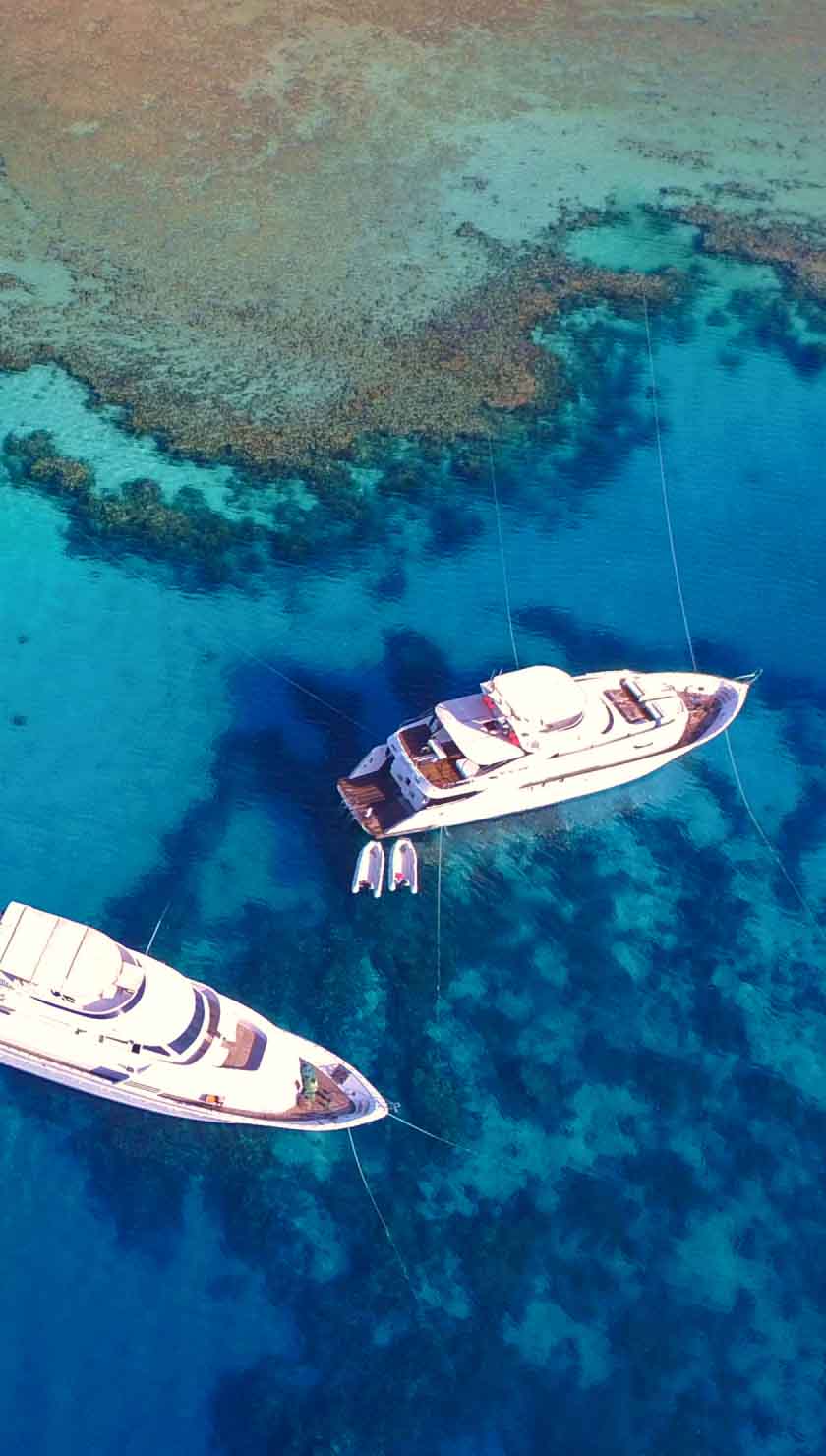Liveaboard Diving in Gato Island
What to expect on a Gato Island Liveaboard
Liveaboards to Gato Island offer divers the chance to explore the amazing underwater scenery in this area. Some say that when diving Malapascua you come for the thresher sharks, but you leave remembering Gato Island. It's true that the tiny landmass of Malapascua off the northern tip of Cebu is most famous for daily sightings of the elusive, graceful thresher with its long tail and big eyes. Indeed, before coming to Malapascua, the threshers at Monad Shoal may be the only thing divers know about the area! However, Gato Island is a close second in Malapascua's treasures, and for good reason - in the waters around Gato there are at least five unique dive sites with the great diversity of creatures large and small making a Gato Island liveaboard an excellent addition to your Philippines itinerary.
Gato Island Underwater
The entire Gato Island is a marine reserve, and even better, a sea snake sanctuary. If you're afraid of one of the most venomous creatures in the ocean, liveaboard diving to Gato Island is the place to get over it, because you are virtually guaranteed to see these incredibly graceful, non-aggressive animals. The other virtual guarantee at Gato is a healthy helping of whitetip reef sharks, which can be seen in a variety of activities, ages, and reef habitats.
Of all Gato Island dive sites, the Cave understandably commandeers the most attention- not many islands have a natural underwater tunnel going clean from one side to the other. You'll see that the entrance to the Cave is marked by lines from the surface, and has a depth of only 12 meters. This shallow depth, the roominess of the tunnel, and the sandy bottom (as opposed to silt) all make the Cave a remarkably accessible overhead environment for divers of many levels. What raises the heart-rate, however, are the sharks. In the Cave, the slower you go, the more sharks you'll see, and not all of them are resting. Some divers experience the thrill of swimming whitetips passing just in front of their masks, and when you exit the tunnel, you're often greeted by slowly circling sharks right outside. Pretty soft corals decorate the walls of the tunnel, though you might be keeping your eyes on the toothy elasmobranchs.
The rest of Gato Island as a whole is generally characterized by good coral (especially soft coral), nice fish life, some dramatic topography, and a special abundance of goodies for macro-lovers. Plus, of course, the consistent backdrop of whitetips and sea snakes. At Whitetip Alley, look for baby and adult sharks sleeping under rocks or circling- some of these adults grow up to two meters in length. This dive site is also great for a good spread of the macro that distinguishes Gato, including banded boxer shrimp, seahorses, frogfish, and nudibranchs. At the Guardhouse, the particular draw is the pygmy seahorse, which can be found camouflaged in gorgonian fans down at 24 meters. The wall at this dive site holds its own treasures, so as you slowly ascend, look for painted frogfish and nudibranchs, especially the 30 cm free-swimming Spanish Dancer.
Gato Island's Nudibranch City offers more nudibranchs of unbelievable colors and patterns. Cathedral, on the other hand, is the best topography dive at Gato. Impressive rock formations here reach up toward the surface, and the sunlight penetrates into their midst with a heavenly aura that gives the site its name. Cathedral is another great place to see circling whitetips.
Itinerary details
Liveaboards diving Gato Island usually visits the Malapascua area for one to three days on Visayas itineraries of 6, 10, or 12 nights. On liveaboard.com, the S/Y Philippines Siren and M/V Seadoors both visit Gato; Siren on its 10-night Visayas trips, and Seadoors on its 6-night Visayas itineraries, with an occasional 12-night journey. At least one of their lives will be at Gato. These liveaboards usually require a budget of around 250 to 350 euros per night.
S/Y Siren is a luxury sailing yacht from the world-traveling Siren fleet. It combines Malapascua with dive areas in Cebu, Bohol, and Negros. Seadoors offers slightly different itineraries, like the Camotes Islands and Southern Leyte on its 6-night trip, and Camiguin, Siquijor, Negros, and Southern Leyte on its long trip. The long trip additionally includes three days of land tours to see waterfalls, markets, and tarsiers. Seadoors is a custom-build dive boat with a length of 25 meters, accommodating up to 16 divers with great diving amenities and comfort.
The experience level required by liveaboards diving Gato Island is Open Water, with either ten or twenty dives, depending on the itinerary.
Getting to Gato Island
Cebu City and Malapascua are the departure locations in the Philippines for liveaboards to Gato Island. Cebu City is a booming metropolis and the regional capital of the Visayas, with a port that sends ferries, cargo ships, and liveaboards out in every direction. Getting to Cebu City is easy with a 1.5-hour flight from Manila or direct flights from select Southeast Asian countries nearby. International flights can get to Cebu City via a transfer in Asia. Malapascua, on the other hand, has no airport, but it can be reached by taxi, van, or bus (and small boat). From Cebu City, getting to Malapascua requires a five-hour bus journey; taxis take about half that time.
Best time to dive Gato Island
Liveaboards diving at Gato Island can be done year-round. While the Malapascua area does experience slightly wetter weather during the regional rainy season of July through December, rain is infrequent compared to Cebu. Sharks and sea snakes are in residence all year round. The water temperature in Malapascua can range from 24 to 30 C, with the lower temperatures corresponding to winter in the northern hemisphere.











